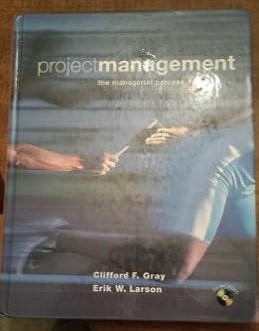Question
Utilizing the passage below: Describe an additional way that cultural norms and job expectations differ among enlisted service members and officers. Provide a clinical practice
Utilizing the passage below:
Describe an additional way that cultural norms and job expectations differ among enlisted service members and officers.
Provide a clinical practice example that illustrates how knowledge of military roles may impact social work practice.
PASSAGE: Although enlisted service personnel are responsible for a wide range of tasks, the fundamental duties are specific to their respective service branches (Military OneSource, 2021). Operational tasks, and "specialist" responsibilities including information gathering, engineering, and medical assistance are all performed by service members the more that they progress through completing the training necessary for their main job during enlistment. From lower ranks, enlisted individuals can rise through a structured career path based on experience, performance, and leadership characteristics. Officers in the commissioned service who supervise and command armed forces are referred to as military officers. They are responsible for creating plans, rendering decisions, and monitoring the work of subordinates. In order to prepare for leadership roles, officers typically complete a demanding training program and hold a four year degree (Military OneSource, 2021).
Compare and contrast the job expectations and cultural norms of enlisted service members and officers.
There all small nuances between culture and job expectations. While enlisted service members are expected to work in a highly regimented, hierarchical environment that prioritizes compliance and discipline, they are also trained in their job to concentrate on operational responsibilities, technical proficiency, and following orders from those who are tenured or senior personnel. Military officers are trained to prioritize people management, strategic planning, leadership, and decision-making as essential job skills. Additionally, they are frequently expected to represent the armed services in a variety of circumstances and are held to higher standards of intelligence, professionalism, and social skills. The above example illustrates a minor distinction between military employment and culture; nonetheless, there is a limited degree of accountability between officers and service members, with officers supervising these duties and service members being more hands-on and front line of most operations (Shattuck & Matsangas, 2022).
Explain what a social worker working with military clients may need to know about these different roles and how this knowledge could impact social work practice.
Any function that military personnel play affects the individual and their social structure, and this is something that social workers need to be aware of. Despite being minimal, an influence none the less over extended periods of time. This holds true for all positions and personnel. Being aware of the workplace culture and any subtle variances in it is a must. These obligations also extend to discussing how physical and mental symptoms may impact military career advancement, security clearances, medical reviews, fitness-for-duty assessments, disability ratings, benefits, and discharge from the service (Wooten, 2015). It's also necessary to have knowledge about and training in evidence - based interventions for people with mood, anxiety, and PTSD. In order to provide valuable treatment planning insight, military social workers must also comprehend the characteristics of the military lifestyle and understand that it is all interconnected. According to this week's readings, officers and service personnel slept for different amounts of time but reported feeling angrier, grouchier, and fatigue from inadequate amounts of sleep (Shattuck, 2022). Even if one element may exist independently of the other, even the smallest amount of sleep deprivation or neglect on the part of a service member could have stronger consequences later one.
References
Military OneSource. (2021, Sept 17). Understanding the roles of military officers and enlisted service membersLinks to an external site..https://www.militaryonesource.mil/military-basics/new-to-the-military/military-officer-and-enlisted-service-members-roles/Links to an external site.
Shattuck, N. L., & Matsangas, P. (2022). Who sleeps more and who works longer in the US Navy: Officers or enlisted personnel?Links to an external site. Sleep Health, 8(4), 387-390.https://doi.org/10.1016/j.sleh.2022.03.007Links to an external site.
Wooten N. R. (2015). Military Social Work: Opportunities and Challenges for Social Work Education. Journal of social work education, 51(Suppl 1), S6-S25.
Step by Step Solution
There are 3 Steps involved in it
Step: 1

Get Instant Access to Expert-Tailored Solutions
See step-by-step solutions with expert insights and AI powered tools for academic success
Step: 2

Step: 3

Ace Your Homework with AI
Get the answers you need in no time with our AI-driven, step-by-step assistance
Get Started


